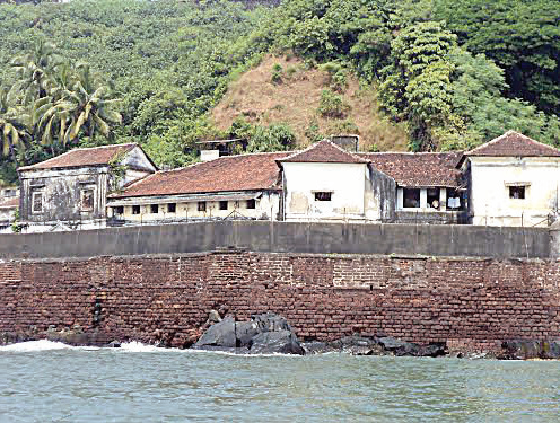Say it must be dedicated to those jailed there for fighting to free state from colonial rule

the goan I network
PANAJI
Plans to set up a museum exclusively housing memorabilia of the late Chief Minister Manohar Parrikar at the Portuguese-era central jail complex in Aguada have hit turbulence with freedom fighters objecting and suggesting that it be dedicated to those who were incarcerated there for fighting to free the territory from colonial rule.
Protesting against the proposal to set up the museum dedicated to Parrikar, who was recently posthumously awarded the Padma Bhushan by the Central government, the freedom fighters said the Aguada jail currently unused and being spruced up, since the building of a new central jail in Colvale a couple of years ago, must house a museum in honour of freedom fighters only. A Portuguese fort-cum-jail, the artefacts placed on display in the museum should only be dated pre-1961 when Goa got liberated, the freedom fighters said.
“It should have nothing to do with post-1961 history. It should be dedicated only to the history of freedom movement of Goa,” said Nagesh Karmali, the spokesman for the Goa Daman and Diu Freedom Fighters Association.
Earlier last week, Ports Minister Michael Lobo in whose home constituency of Calangute the historic Portuguese fort is located had announced that the under-repair complex will house a museum dedicated to Parrikar.
Lobo had said that personal articles of Parrikar, including stuff like his slippers will be placed on display at the museum. Aguada fort, according to Karmali, was a symbol of freedom fighters’ struggles against the atrocities inflicted on them by the colonial rulers.
“If they want to erect memorials or museums for eminent personalities, they should build it elsewhere. Let Aguada be dedicated to the heroes of the freedom struggle only,” an incensed Karmali said.
The 17th century Aguada fort finds its name associated with water, Agua in the Portuguese language, as it was first used as a water re-filling stop for ships before the colonial rulers converted it into a top-security jail.
When Goa got free by Indian army action in 1961, it continued to be used as a central jail up until a couple of years ago when the modern central jail complex at Colvale was commissioned.